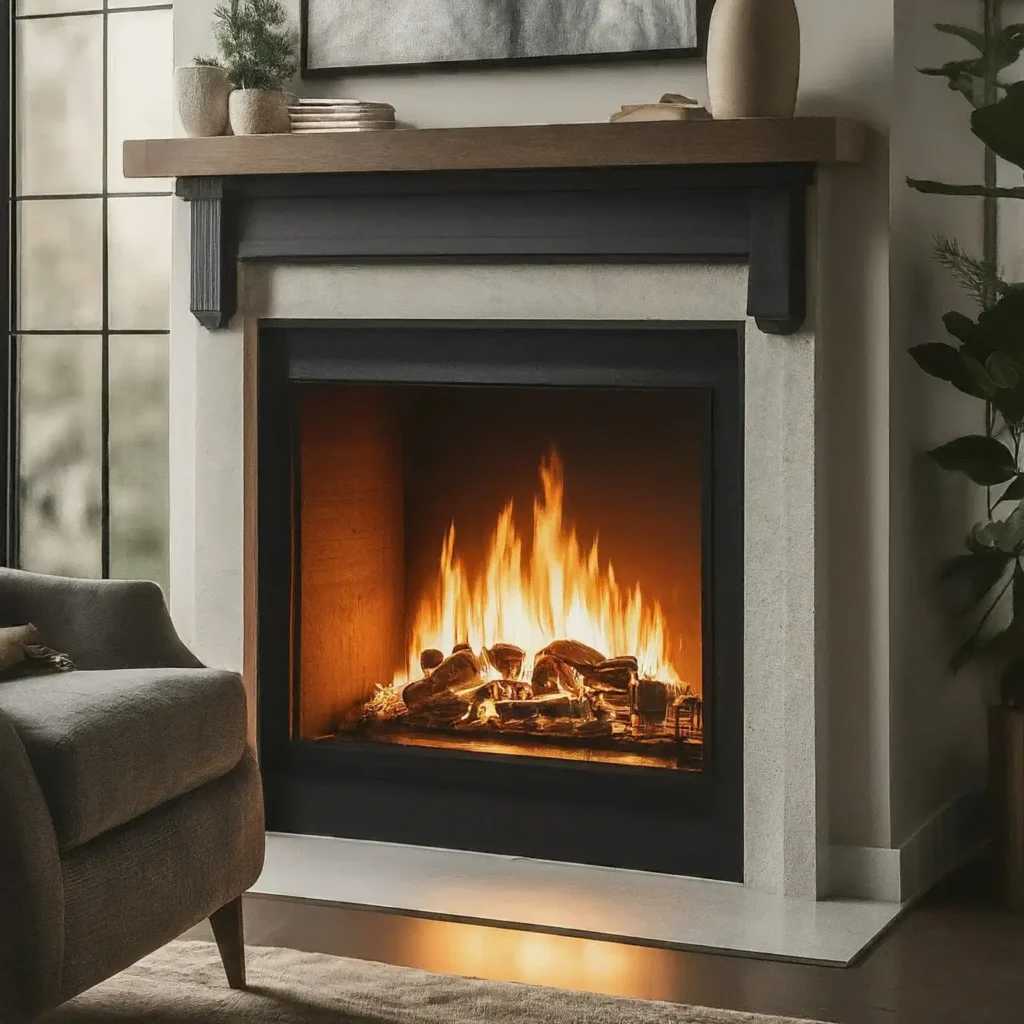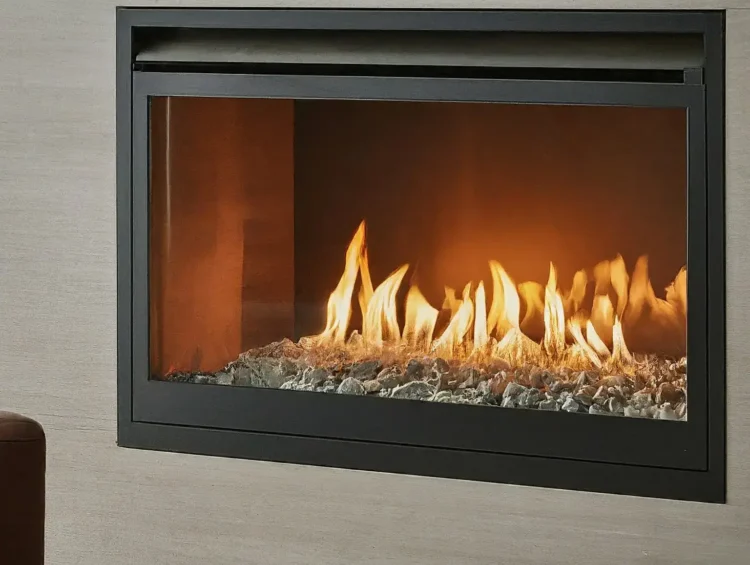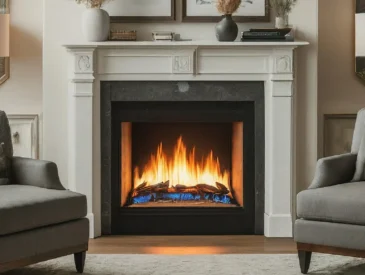Gas fireplaces provide the cozy ambiance of a live fire without the hassle of cleanup. Many indoor models feature a glass front, which raises a critical question: does this glass front enhance efficiency?
The answer is yes. Glass-fronted gas fireplaces are indeed more efficient, primarily because they prevent room air from being utilized for combustion.
Consequently, the room’s air remains inside and is gradually warmed through both convection and radiant heat from the fireplace’s pane.
Exploring the Efficiency of Glass-Fronted Fireplaces
Glass-fronted fireplaces excel in raising room temperature efficiency. They achieve this by neither drawing room air for combustion nor expelling it outside. Instead, the glass pane radiates heat into the room, ensuring a cozy environment.
To grasp why a glass-paned fireplace is more efficient, let’s delve into its operation. These fireplaces have a vent system that supplies air to the flame and expels exhaust outside.
This method means that room air isn’t used, allowing it to stay within the room, rather than escaping through the vent.
Moreover, many glass-fronted fireplaces employ convection to circulate room air, either through natural flow or aided by a fan system, thereby further enhancing efficiency.
Related: Efficient Insert guide
Distinguishing Between Open Front and Glass Front Fireplaces
The primary distinction between an open-front and a glass-front fireplace is their air source and venting system. Open front systems draw oxygen from the room, resembling the traditional wood-burning fireplace.
While lacking the crackling charm, they do provide a realistic fire experience, especially in outdoor settings. Radiant heat is felt directly, as no glass pane obstructs it.
Conversely, glass-front systems prioritize the comfort of a live fire and supplemental heating efficiency. These systems rely on vents for air supply, allowing room air to remain undisturbed.
This gradual increase in room temperature is safer, as the flame is shielded behind glass. Additionally, the flame’s color tends to be warmer, emitting a cozy ambiance.
Do Direct Vent Gas Fireplaces Mandate a Glass Front?
A direct vent fireplace necessitates a glass front to prevent the use of room air in combustion. This system is designed to draw all necessary air from outside and expel it likewise.
Such fireplaces offer a realistic yellow flame and require an exhaust vent to eliminate any smoke or gases. On the contrary, ventless fireplace systems,
popular in the market, may lack a glass panel or feature a partial one. Here, the room air fuels the fire, and with minimal exhaust, no vent or chimney is required.
Consider these as the bonfire-mimicking outdoor gas fireplaces or the fire tables found in restaurants. While they offer radiant heat up close,
without a blower, they may not efficiently raise the room’s thermal temperature.
Related: fire prevention

Gas vs. Wood Fireplace Efficiency
Compared to traditional wood-burning fireplaces, glass-fronted gas fireplaces prove more efficient. The gas system is designed to recirculate warm air into the room while preventing room air from escaping.
Wood fireplaces tend to lose a significant amount of heat through the chimney, especially without a blower.
Additionally, when not in use, the glass front system effectively seals the room, preventing air loss and drafts.
Pros and Cons Comparison: Gas vs. Wood Fireplaces
Gas Fireplace Pros:
Cleaner fuel Efficient Low maintenance
Gas Fireplace Cons: Incapable of burning papers or cardboard Lacks crackling fire ambiance
Wood Fireplace Pros: The ambiance and crackling fire Customizable logs, some with pleasant scents Ideal for roasting marshmallows
Wood Fireplace Cons: Requires maintenance It takes effort to start a fire Potential for smoke billowing into the room
Consider these factors when choosing a gas and wood fireplace for your home.





